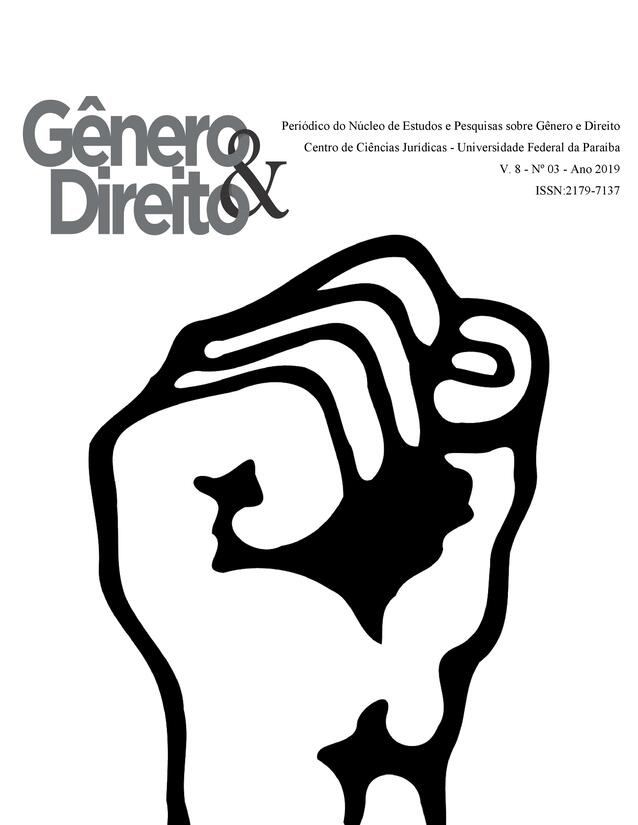CRITICAL STUDY OF IRANIAN MOVIE »NASSEREDIN SHAH, ACTOR OF CINEMA «ON THE BASIS OF THEORIES OF THE POSTMODERN NOVELS
DOI:
https://doi.org/10.22478/ufpb.2179-7137.2019v8n3.47648Palavras-chave:
Postmodern School, Postmodern Novel, Iranian Cinema, Postmodern Cinema, Written Text, Visual TextPostmodern School, Visual TextResumo
Contrary to the French school of comparative literature, according to which it is merely possible to compare the two written texts in terms of conditions, in the American approach, the adaptation of literary texts to various arts, including cinema, is possible, which leads to a better understanding of literature. Since novels and films have many similarities, they are in many respects similar to each other, and two genres are considered analogous.These commons provide a good ground for discussing a movie from the perspective of a new literary theory and critique, and allow us to use the concepts and terminology we normally know as a tool for discussing the novel to critically explore the structure and art and the themes of the film. On the other hand, in recent years, the term "postmodernism" has been widely criticized about the novel in our country, and many new fiction writers also have a fascination with postmodern style fiction. Therefore, in this research, first, reviewing the views of some of the most important postmodern literature scholars, nineteen techniques used in postmodern novels are explored, and their qualitative method of applying them to Naser al-Dinshah film actor have been investigated.The results of the study show the relationship between literature and cinema (as a visual text) and the ability to compare the two written and visual texts; as many techniques used in the writing of postmodern novels are also with a high frequency have been used in the studied filmDownloads
Referências
Azar Bigdeli, Lotfali Ben Aghakhan (1957). Atashkadeh.With correction and suspension of Hasan Sadat Nasseri.First part. First printing, Tehran: Amir Kabir.
Omid, Jamal (2010 A). Culture of Iranian Cinema Films (1971-1930).Second edition. First V. Eighth C. Tehran: Negah.
ـــــــــــ (2010 B). Culture of Iranian Cinema Films (1972-1986). Second edition.Second V. Eighth printing. Tehran: Negah
ـــــــــــ (2011 C). Culture of Iranian Film Cinema (1987-1998). Third V.ThirdP.Tehran: Negah
ـــــــــــ(2010 D). Culture of Iranian Cinema Films (1999-2009). Fourth V. First P. Tehran: Negah
Payandeh, Hussein (2014 A).Short story in Iran (third volume, postmodern stories). Second P. Tehran: Niloufar.
ـــــــــــ(2014 B). Opening a novel: Iran's novel in the light of literary critique and theory. Second P. Tehran: Morvarid.
ـــــــــــ(2007). Postmodern novel and film: A look at the structure and crafts of the mix film. First V. Tehran: Hermes
ـــــــــــ (2011). Discourse Criticism: Articles in Literary Criticism. Second edition. Second P. Tehran: Niloufar.
Pourya, Amir (1992). "Fascinating corpses." Film Movie Monthly, 138: pp. 102-104.
Dadgoo, Mohammad Mehdi (producer) and Makhmalbaf, Mohsen (director).(1997). Naser al-Dinshah Cinema Actor.[VCD]. Tehran, Visual Media Institute.
Dehkhoda, Ali Akbar (2012). AmsalvaHekam. Third V. Twenty-first P. Tehran: Amir Kabir.
Shamisa, Sirus (2009). Contemporary Literature Guide (Explanation and Analysis of the Selection of New Persian Poetry). Second V.Tehran: Mitra.
Safa, Zabih Allah ... (2011). History of Literature in Iran and in the Territory of Persian Language.Fifth V.First part. Fourth P. Tehran: Ferdos.
Fanni, Kamran and others (2010).Encyclopedia of Science.Seventh, thirteenth and fourteenth Volumes. First P. Tehran: DaneshGostarRooz Institute.
Kush, Selina (2017). Principles and foundations of literary texts analysis.Translation by Hossein Payandeh. First V. Tehran: Morvarid.
Laj, David and others (2010). Theories of the novel: from realism to postmodernism. Translation by Hossein Payandeh. Second P. Tehran: Niloufar.
MastaliParsa, Gholamreza and Asadiyan, Maryam (2008). "The postmodern story elements in: The works of Nader Ebrahimi". Language and Literature Chapter of the Letter, Allameh Tabataba'i University, 37: pp. 134-164.
Maghdadi, Bahram (2014). Encyclopedia of literary criticism. First V. Tehran: Cheshmeh.
Machill, Bryan and others (2014).Modernism and postmodernism in the novel.Selection and translation of Hossein Payandeh. Second edition First V. Tehran: Niloufar.
MusaviBojnourdi, Kazem and others (2014). Comprehensive history of Iran.Twelfth and Nineteenth volumes.
First P. Tehran: The Great Islamic Encyclopedia Center

